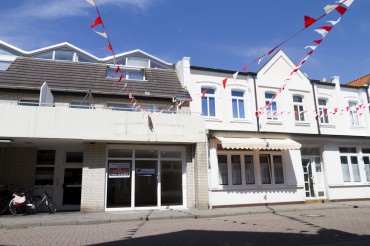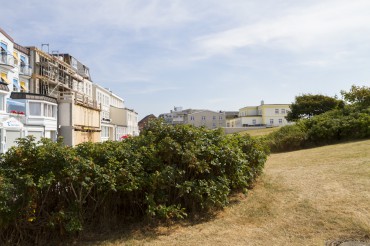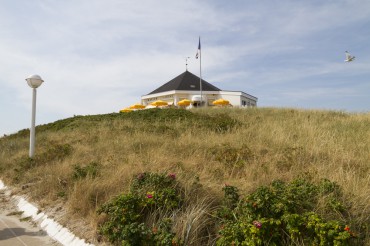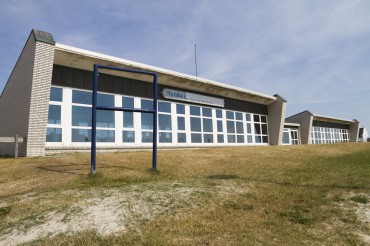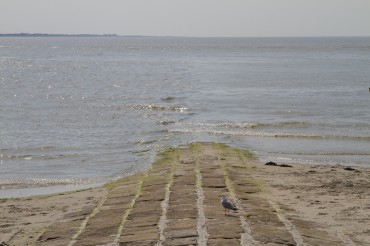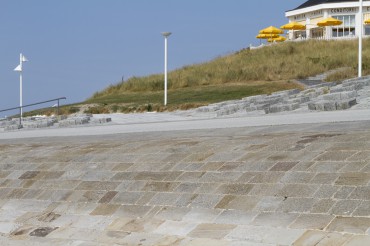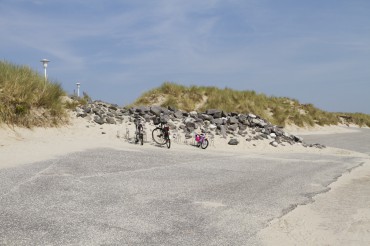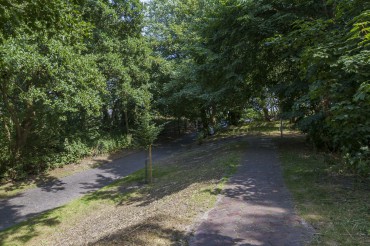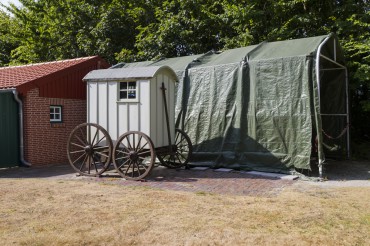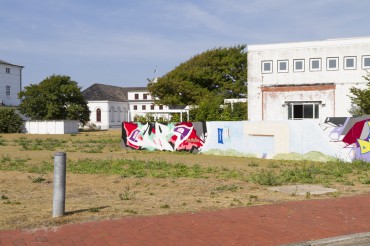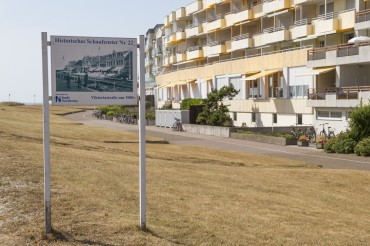The next day was about as warm as is possible on a North Sea island. We took a bus into the town. After stopping at a take-away for fish in a bread roll, we ventured through the central streets. I couldn’t find it on any maps, but as we walked, I kept an eye open for a street that might have once been Schwannallee.
Norderney from the turn of the 20th century had not been preserved in aspic, and what we found was a pleasing mix of 19th century “resort” architecture and late 20th-century utilitarian. Now as then, most of the buildings were geared to tourism, and there was little to suggest that anyone actually lived there for more than a couple of weeks.
We reached the Conservationshaus which once was the summer residence of George V of Hanover. We looked briefly inside where we found bars and a tourist information office.
Tom and Alessandra were complaining about the heat and eager to go in the sea. The busy West Beach was not far away, and I could leave them there while I went off to look at the coastal defences on this side of the island.
Like many of the islands in this string, Norderney is shifting eastward. I’ve noticed on historic maps that the town is shown in the middle of the island whereas now it’s at its western end. In contrast to the soft engineering I had seen to the island’s north, the West Beach was heavily protected from erosion by stone and concrete. Groynes protruded out from the beach and layers of old and new sea walls piled up on top of each other. Behind these, the dyke cut the town off from its promenade. I imagine these defences had been strengthened multiple times over the last century, and it was difficult to picture the Norderney I knew from black-and-white postcards.
I had been reading that the island had existed since the Grote Mandrenke in 1362. The flood separated off a section of the island of Buise, which became known as Osterende and later Norder neys Oog (“Northern New Island”) or Norderney. The rest of Buise gradually shrank and disappeared in the Petri flood of 1651. Around 1797, Norderney became the first of Germany’s North Sea resorts: I read somewhere that it had been modelled on Brighton.
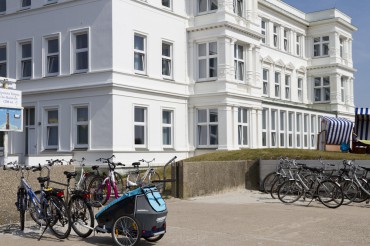
Around the back, the crowds diminished. The green dyke swooped around to the south of the island – the ferry port visible in the distance. Past patches of of soft landscaping began holiday housing estates in a modern vernacular style. I got lost for a while and could feel the skin on my neck burning in the early afternoon sun.
Walking back to the town, behind the dyke and the promenade, there were a surprising number of trees. I assumed these had been planted, not for ornamental reasons, but because they could perform a role in protecting the coastline.
Emerging from the wood on the opposite side, I found myself at the back of the Conservationshaus. I followed the dyke round, past the hotels and apartments and climbed back on to the beach. I didn’t spend long in the sea, due to an overabundance of wasps and other insects.
We returned to the campsite, and prepared hot dogs and instant noodles on our gas stove.

